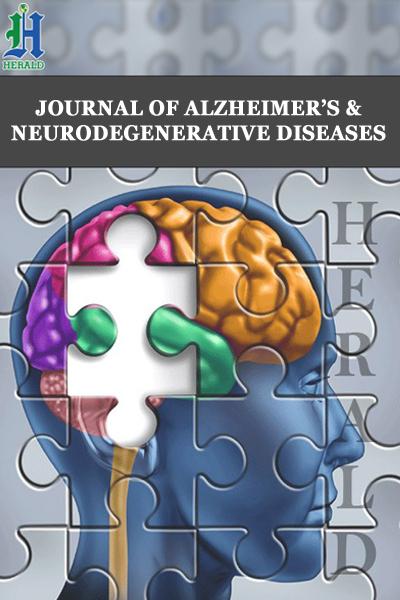
Supranuclear Opthalmoplegia, Neck Dorsiflexion, and Midbrain Tegmentum Atrophy Associated with Brainstem Pathology of Alzheimer’s disease
*Corresponding Author(s):
Naoki KasahataNational Institute Of Advanced Industrial Science And Technology, Japan
Email:naoki.kasahata@gmail.com
Introduction
It has been well known that Alzheimer’s disease affect brainstem [1-4], however, clinical manifestations caused by brainstem involvement have not been elucidated. We encountered 2 cases presented supranuclear ophthalmoplegia, neck dorsiflexion, and midbrain tegmentum atrophy associated with brainstem pathology of Alzheimer’s disease.
Clinical summary: Case 1 [5]. A 75-year-old man developed 9 years course of l-dopa nonresponsive parkinsonism, supranuclear ophthalmoplegia, and neck dorsiflexion at the terminal stage. MRI revealed atrophy of the midbrain tegmentum.
Case 2 [6]. An 85-year-old man developed 9 years course of l-dopa responsive parkinsonism and subsequent dementia, followed by supranuclear ophthalmoplegia, neck dorsiflexion, and dementia. MRI revealed midbrain tegmentum and medial temporal lobe atrophy.
Neuropathological findings: Case1. Cortical atrophy was moderate in frontal and temporal lobes. The substantia nigra and locus coeruleus were depigmented. Gliosis was observed in midbrain tegmentum. Abundant senile plaques were detected cerebral cortex (Braak C). Small senile plaques were remarkably detected in colliculi. Neurofibrillary tangles were positive for both 3R and 4R tau with the predominance of 3R tau. They were abundant in cerebral cortex (Braak VI), and frequent in colliculi. Lewy bodies were abundant in amygdala but scarce in midbrain tegmentum.
Case 2. Substantia nigra showed thin but depigmentation was mild. Locus coeruleus showed depigmentation. Microscopic findings demonstrated pure Alzheimer’s disease (tangle pathology: Braak V, plaque pathology: Braak C) with 3R dominant neurofibrillary tangles in substantia nigra, near riMLF, and superior colliculus. Senile plaques were observed in superior colliculus. Neither Lewy body nor α-synuclein positive material were observed.
Alzheimer’s pathology affects brainstem, which can cause supranuclear opthalmoplegia, neck dorsiflexion, and atrophy of midbrain tegmentum.
References
- Ishino H, Otsuki S (1975) Distribution of Alzheimer’s neurofibrillary tangles in the basal ganglia and brain stem of progressive supranuclear palsy and Alzheimer’s disease. Folia Psyciatrica et Neurologica Japonica 29: 179-187.
- Parvizi J, Van Hoesen GW, Damasio A (2000) Selective pathological changes of the periaqueductal gray matter in Alzheimer’s disease. Ann Neurol 48: 344-353.
- Parvizi J, Van Hoesen GW, Damasio A (2001) The selective vulnerability of brainstem nuclei to Alzheimer’s disease. Ann Neurol 49: 53-66.
- Lee JH, Ryan J, Andreescu C, Aizenstein H, Lim HK (2015) Brainstem morphological changes in Alzheimer’s disease. Neuroreport 26: 411-415.
- Kasahata N, Uchihara T, Orimo S, Nakamura A, Makita Y (2012) Limbic and nigral Lewy bodies and Alzheimer’s disease pathology mimicking progressive supranuclear palsy in a 75-year-old man with preserved cardiac uptake of MIBG. J Alzheimer Dis 32: 889-894.
- Kasahata N, Hagiwara M, Kato H, Nakamura A, Uchihara T (2014) An 85-year old male with levodopa-responsive parkinsonism followed by dementia and supranuclear ophthalmoplegia caused by Alzheimer-type pathology without Lewy bodies. J Alzheimer Dis 39: 471-476.
Citation: Kasahata N (2021) Supranuclear Opthalmoplegia, Neck Dorsiflexion, and Midbrain Tegmentum Atrophy Associated with Brainstem Pathology of Alzheimer’s disease. J Alzheimers Neurodegener Dis 7: 054.
Copyright: © 2021 Naoki Kasahata, et al. This is an open-access article distributed under the terms of the Creative Commons Attribution License, which permits unrestricted use, distribution, and reproduction in any medium, provided the original author and source are credited.

